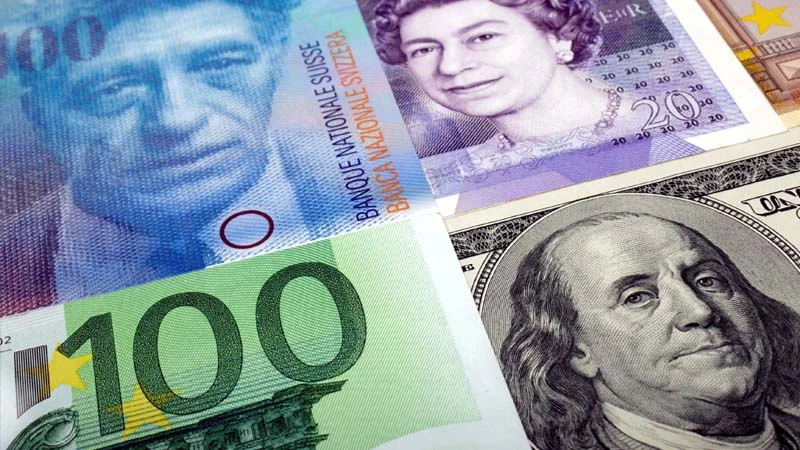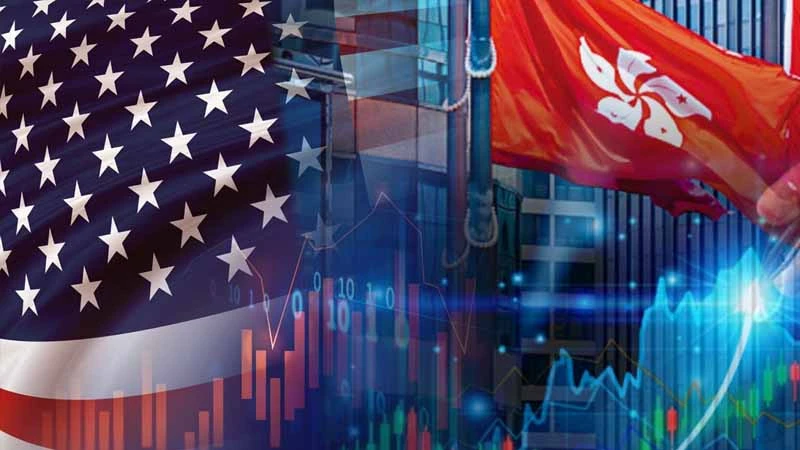US Dollar and Euro Exchange Rates Show Divergent Trends as Fed Rate Cut Expectations Rise
Recently, the US Federal Reserve Board (Fed) decided to suspend further interest rate cuts at its meeting on 29 January, keeping the benchmark interest rate within the range of 4.25% to 4.5%. This move triggered market concern over the trend of the US dollar.
As of 14 February 2025, the US Dollar Index was 105.12, up 0.31% from the previous value, and remained at a near-decade high. The USD/CNH exchange rate broke above the 7.15 barrier, hitting a record high since the fourth quarter of 2024, while the EUR/USD exchange rate oscillated between 1.04-1.06, depreciating by about 11% from the 1.18 level at the beginning of 2024.
The policy game: monetary policy paths of the Fed and ECB
Chain reaction to the start of the Fed’s rate-cutting cycle
In September 2024, the Federal Reserve implemented a significant rate cut of 50 basis points to the 4.75%-5% range, marking the first extraordinary rate reduction since the 2020 pandemic. Although the market had partially priced in the expectation in advance, the move still intensified the inversion of the US Treasury yield curve, with the 10-year Treasury yield fluctuating around the 4% level. While the US Dollar Index briefly retreated to 104.52, it regained upward momentum in early 2025, supported by a return of safe-haven capital.
The European Central Bank’s Dilemma
ECB President Christine Lagarde recently said that she is “paying close attention to the impact of exchange rate fluctuations on inflation”, hinting at possible adjustments to the pace of monetary policy.
At present, the eurozone core CPI still reached 3.2% year-on-year, higher than the policy target of 2%, but the manufacturing PMI has been six consecutive months at the bottom of the line, the policymakers face a “stable exchange rate” and “growth” of the difficult balance.
Evolving Market Logic: From Interest Rate Parity to Risk Premium
Reconstructing the Appeal of US Dollar Assets
Despite the Federal Reserve entering an interest rate cut cycle, the US dollar LIBOR remains high at 4.8%, significantly above the eurozone’s benchmark rate of 2.5%. Coupled with geopolitical risk premiums, the US dollar continues to serve as a major safe haven for international capital. According to SWIFT statistics, the US dollar’s share in global payment settlements has rebounded to 48.3%, marking a new high since 2022.
Structural Concerns in the Eurozone Economy
The latest report from Germany’s IFO Institute shows that the investment sentiment index for eurozone enterprises has fallen to -12.7, the lowest level since the second quarter of 2020. In particular, the accelerated relocation of energy-intensive industries has led to a narrowing of the eurozone’s current account surplus to 0.8% of GDP, a decline of 1.2 percentage points compared to the same period in 2023.
Institutional Views: Three Diverging Opinions on Currency Market Trends
US Dollar Peak Theory:
CITIC Securities believes that the US core PCE price index has remained below 3% for three consecutive months. As the interest rate cut cycle deepens, the US Dollar Index may decline to below 98 in the second quarter of 2025.
Euro Rebound Theory:
Standard Chartered Bank’s strategy report points out that if the European Central Bank ends quantitative tightening early and the EU recovery fund is implemented, the euro may rebound to 1.12 against the US dollar.
Range-bound Fluctuation Theory:
UBS Wealth Management emphasizes that the unwinding of yen carry trades and emerging market debt risks could trigger sharp volatility in the currency market. It recommends investors maintain long hedges in the US dollar and gold.
Investment Strategy: Multi-dimensional Allocation to Manage Exchange Rate Volatility
Import and Export Enterprises:
It is recommended to use a combination of forward foreign exchange contracts+options to lock in exchange rate risks, with a focus on hedging euro payment exposure.
Individual Investors:
Attention can be given to US dollar money market funds (such as Vanguard Federal Money Market Fund) for short-term returns, with an allocation ratio not exceeding 30% of liquid assets.
Institutional Investors:
Appropriately increase offshore renminbi bond positions. Currently, the yield spread between US and Chinese 10-year government bonds has narrowed to 80 basis points, highlighting allocation value.
As the Federal Reserve’s policy path becomes clearer, investors are advised to closely monitor the January 31 FOMC meeting minutes and the February 5 eurozone CPI final reading, as these two key points may act as catalysts to break the current equilibrium in the currency market.
*The content of this article is for sharing and reference purposes only and does not constitute professional investment advice. Due to differences in individual circumstances and needs, you may contact the Cashback Island team or consult your financial planner for professional advice.
Frequently Asked Questions
Q1. Will US interest rate cuts lead to a rise in stocks?
Not necessarily. A rate cut does not automatically mean that US stocks will rise. Simply put, if the rate cut is intended to support economic expansion or curb declining inflation, the stock market tends to rise in most cases. However, if the rate cut is due to economic deterioration or a crisis outbreak, the stock market may instead fall.
Q2. What does benchmark interest rate mean?
The benchmark interest rate, or base rate, is the interest rate at which central banks (such as the Reserve Bank of Australia or the Federal Reserve) lend to commercial banks. Although commercial banks can set their own lending and deposit rates, they usually adjust them based on the benchmark rate. Therefore, central banks can encourage or slow down spending behavior depending on economic conditions by adjusting the benchmark rate.
Q3. When does the Fed hold meetings?
The Federal Open Market Committee holds at least 8 regular meetings each year, roughly once every 6 weeks, and holds additional meetings as needed. It is responsible for reviewing the national economic situation, assessing risks to economic growth, and managing the federal funds rate.
| 2025 FOMC Meeting Schedule Information | ||
| FOMC Meeting Dates | FOMC Rate Decision Announcement Time | Interest Rate |
| 2025/1/28-2025/1/29 | 2025/1/30 at 3:00 AM | 4.25%~4.5% |
| 2025/3/18-2025/3/19 | 2025/3/20 at 2:00 AM | Not yet announced |
| 2025/5/6-2025/5/7 | 2025/5/8 at 2:00 AM | Not yet announced |
| 2025/6/17-2025/6/18 | 2025/6/19 at 2:00 AM | Not yet announced |
| 2025/7/29-2025/7/30 | 2025/7/31 at 2:00 AM | Not yet announced |
| 2025/9/16-2025/9/17 | 2025/9/18 at 2:00 AM | Not yet announced |
| 2025/10/28-2025/10/29 | 2025/10/30 at 2:00 AM | Not yet announced |
| 2025/12/9-2025/12/10 | 2025/12/11 at 3:00 AM | Not yet announced |
Related articles
-
Since 2025, global financial markets have continued to focus on the monetary policy trends of the US Federal Reserve (Fed) and movements in the US Dollar Index. As a barometer of the international market, the performance of the US Dollar Index (DXY) directly affects asset prices and capital flows in...2025 年 3 月 18 日
-
2024 Q4 US Nasdaq Index plunged 3.6%, while the Hang Seng Tech Index fell 4.2% simultaneously, highlighting that the linkage between the two markets has deepened to the level of capital flows. Facing the Federal Reserve’s policy swings, the tech industry’s cyclical shifts, and rising geopolitical risks, Hong Kong stocks...2025 年 2 月 21 日
-
In February 2025, Donald Trump's 25% tariff on imported cars triggered an instant earthquake in the global supply chain. This trade policy, which has been labelled “America First 2.0", has not only forced multinational car companies to urgently reorganise production, it has also pushed the price of precious metals past...2025 年 2 月 21 日













